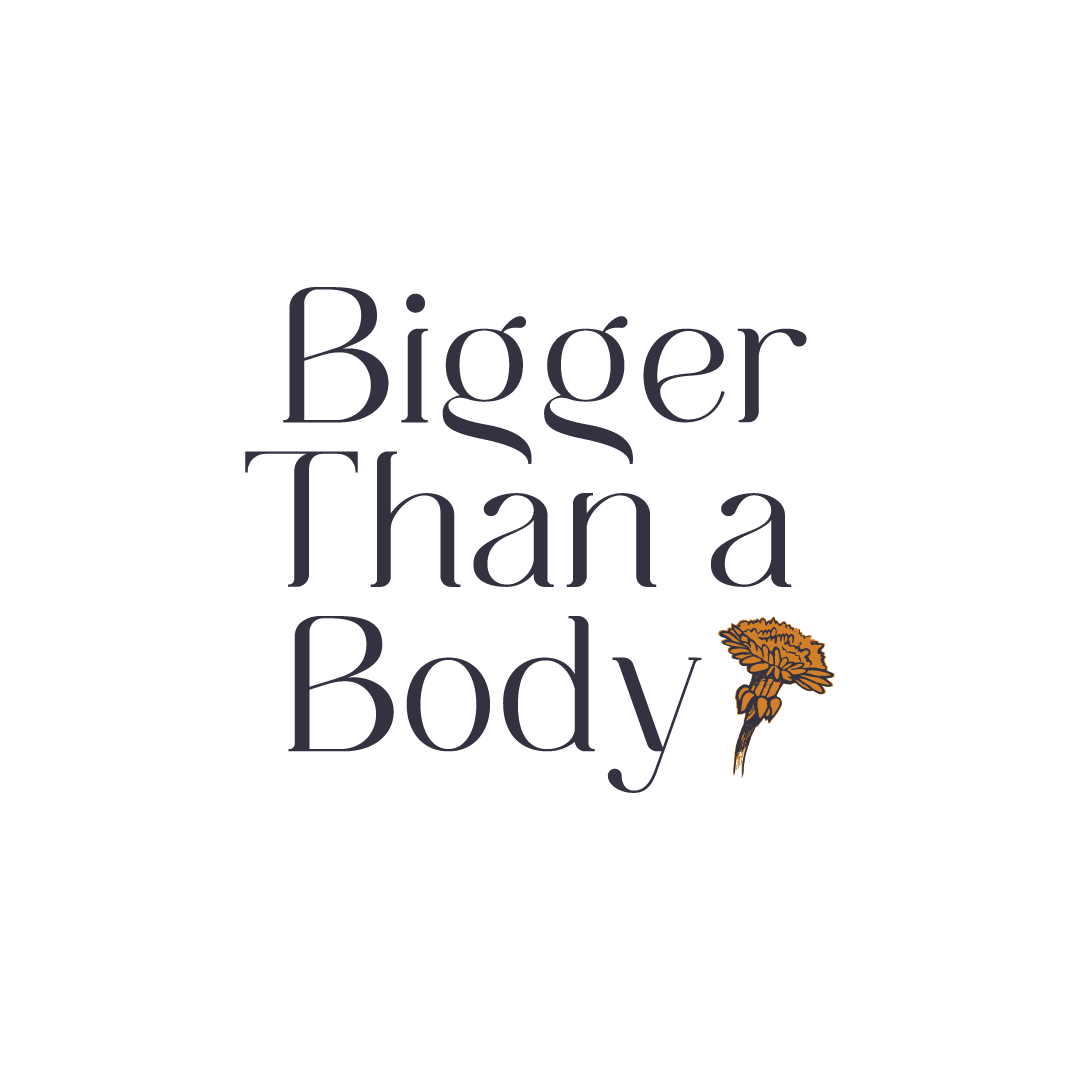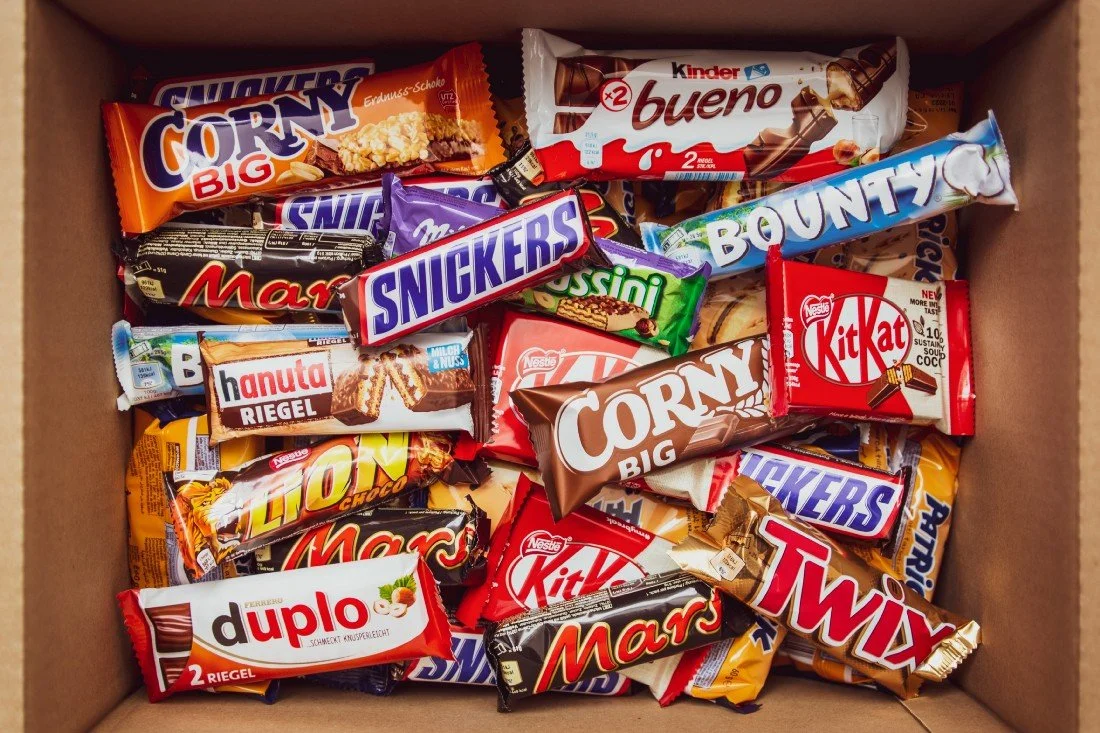To Eat or Not to Eat Your Leftover Halloween Candy
Let me help answer thy question
Photo by Denny Müller on Unsplash
“Sometimes I think that the one thing I love most about being an adult is the right to buy candy whenever and wherever I want.” ― Ryan Gosling
Halloween candy tantalized me for most of my life. No big surprise considering I suffered from various eating disorders from childhood through my late 20s.
An endless swarm of thoughts circulated my sick brain each time I saw a mountainous bowl of candy.
“Empty calories.”
“You’re weak if you take any.”
“I can already see your waist expanding.”
“You’re not even hungry, so what is there to contemplate?”
“Sugar is poison.”
These thoughts dominated me. But after years of therapy and working with an eating disorder recovery coach, my fear of candy became a thing of the past.
As I’m writing this, I’m eating a fun-sized Twix candy bar with my coffee. I wanted to set the stage, but let’s not kid anyone. My Twix and coffee date would be happening, article aside.
I’m able to do this because I learned how to eat what felt right in the moment without judgment. I learned how to honor my cravings without mindlessly eating. I learned how to see the fun in food without abusing it.
Here are a few questions you can ask yourself to feel more in control of choosing whether to eat — or not to eat — your leftover candy.
Who’s Hungry in There?
Photo by Uriel Mont on Pexels
A common misconception about hunger is that we sense it from one place — our stomach. Author, pediatrician, and Zen teacher Dr. Jan Chozen Bays challenges that belief in her book Mindful Eating: A Guide to Rediscovering a Healthy and Joyful Relationship with Food. Dr. Bays lays out seven types of hunger we experience and the importance of understanding, recognizing, and honoring each one. The seven types are:
Stomach hunger: The physical hunger you experience in your gut. Signs include hunger pangs, growling, and a general empty feeling in your belly.
Cellular hunger: This other type of physical hunger occurs in our cells. Think of that energy crash feeling you get while engaged in prolonged physical activity. Your stomach seems content, but the rest of your body is screaming, “feed me, or I’m about to pass out.”
Mind hunger: Think of a time you heard someone raving about the sensational dish they had downtown last night or the scrumptious cupcake they ate over the weekend. Talking about delicious food naturally causes us to think about food which causes us to crave food.
Mouth hunger: You know how you sometimes take a bite of something and your taste buds flutter into complete euphoria? That intense pleasure propels you to take another bite. And then another. And then another. Eventually, the taste sensation will lose its luster, but your mouth will keep asking for more until that point.
Eye hunger: The mere sight of food can spark hunger. This may be what you’re experiencing right now with Halloween candy. You see it. You want it. The end. Without eye hunger, the food and restaurant industries would save billions of dollars each year on advertising.
Nose hunger: If you’re someone who can walk by a bakery and not instantly start drooling, I’d venture to guess you’re not entirely human. Delicious aromas activate areas of the brain like the amygdala (emotional response center) and hippocampus (memory center) that can induce food cravings.
Heart hunger: Food has healing power. Maybe it’s grandma’s homemade chicken noodle soup on a rainy day. Maybe it’s a cup of hot cocoa and a sugar cookie by the fire. Maybe it’s eating a pasta dish that includes a variety of your home-grown vegetables. Without question, food soothes the soul.
If you’re debating on having some Halloween candy, take these seven hungers into account. Begging with a 30-second internal tune-in, and ask yourself, “Who’s hungry in there? Is it my stomach? My eyes? My heart? How hungry are they? What signals are they sending?”
If you’re struggling to come up with anything, it’s probably best to move on with your day without taking any candy.
If you can identify the source of hunger, ask yourself, “Will this candy satisfy that hunger?” If yes, confidently take your piece of candy and enjoy it. Feel it melt in your mouth. Observe how your taste buds react. Make it an active rather than a passive experience.
How Will I Respond to the Sugar?
Truth be told, we don’t need candy to survive, but we do need food. And candy is food, albeit not the most nutritious.
Still, it is an energy source and a tasty one, at that. Most of us can have a few bite-sized Reese’s or Snickers and feel perfectly fine. It would take eating several more for a gut ache or an energy crash to ensue.
But you may have a sensitivity to any amount of refined sugar. If this is the case, do a different type of 30-second tune-in. Ask yourself, “Is eating this candy worth the potential side effects?” Then vividly imagine those risks playing out.
You may decide to skip out, or you may decide to take the risk. The important thing is you created a space to thoughtfully respond to your initial impulse.
Will This Lead to a Binge?
If you struggle with compulsive eating, binge eating, or feel out of control around sweets, deciding to eat candy becomes a bit more nuanced.
Take some time to reflect on your recent eating patterns, ideally with sugary foods. What do you see? If you envision mindless, chaotic eating, it may be best to remove the candy from your environment. Either offer it to a neighbor, take it to work, or simply throw it away (this is a time when it’s okay to be wasteful). Save a few pieces for yourself, and wait to eat them until the remaining candy is no longer in your possession.
As I often tell my clients who have binge eating disorder and bulimia, the short-lived comfort you may feel from the binge won’t outweigh the impending discomfort you’ll feel post-binge. Put up the temporary barrier of removing the candy so you don’t feel triggered. As you move forward in healing your relationship with food, you can slowly and gradually allow them back in.
Why Can Others Eat This but Not Me?
You bought Halloween candy. You took your kids trick-or-treating. You handed out the candy.
Millions of people all over the world (myself included) are eating more candy right now than on a normal basis.
Why is it okay for everyone else to have candy but not you?
I ask this question not to relegate your struggles and your fears.
The fear of instantaneous weight gain.
The fear of eating a “bad” food.
The fear of eating something when you’re not physically hungry.
But if you genuinely want candy and are abstaining from it due to a fear of weight gain, this is a false fear.
Sure, eating 20 pieces of candy every day for the next two weeks may have some health implications. And, again, if you feel you would indulge in such a way, it may be in your best interest to clear out the candy.
But a piece or two each day is not a sin. It is not you cheating. It is not you lacking willpower.
When we place such rigid rules around food, we often convince ourselves we’re in control. In all actuality, it’s the food controlling us.
To face this fear, I encourage you to take a piece or two of candy that you fancy. Now go sit down somewhere comfortable. Your favorite chair. On your patio. With your kids around the table.
Take a bite, and chew it slowly. Really taste it. See if you discover anything new about it.
If you’re with your kids, ask them which candy they like best and why.
Make it fun. Make it a satisfying experience. When you’re satisfied, you’re free to move on with your day, no longer tainted by the bowl of candy on the countertop.
Final Thoughts
We don’t need candy. But we also don’t need self-inflicted ridicule for wanting it sometimes.
Hunger comes in various forms — not just physical — and we have the right to honor each one.
Food is nourishment, but it’s also fun. It’s holidays and special occasions. It’s nostalgia and social connection. It’s culture and adventure.
Above all, there are no inherently good or bad foods, only bad eating habits.
So if you’re hungry for a piece of candy or two, go for it! Take pleasure in it. And don’t regret it for one bite-sized second.
Like what you just read?
Join my email list to receive a free copy of the 10 Keys to Food & Body Liberation, as well as weekly affirmations, inspirational stories, and more to help you find lasting peace with how you eat, move, and view your body.



